ADMV - What is it?
On the club meeting someone showed me a few stamps with motorcycles and the text "Spendenmarke" and the ADMV logo.
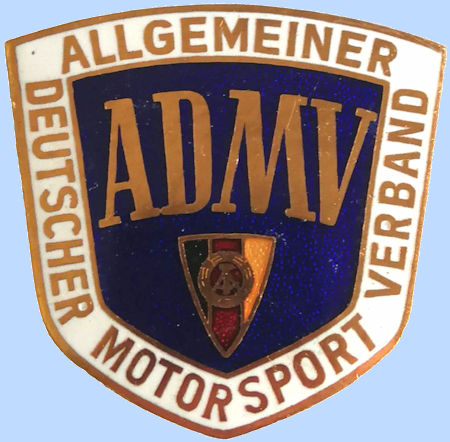
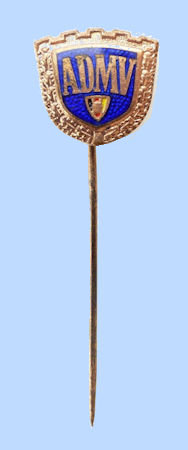
Although I knew these stamps, I had never really paid attention to them. It is clear that they are not stamps, but a kind of sponsoring labels.
In the East block everything had to be controllable, thus also everything that was related to money. Also in the GDR this rule was applied.
Every mark that was paid to a club as contribution, membership fee, donation or sponsoring
had to be traceable. To enable this, sellers/receivers got sheets of labels with a certain value. When you paid for instance 6.5 mark for entrance to a motorcycle race, you received in exchange the same value in labels. When the cash was made up the volunteers or officials had to deliver the same sum in money as was given out in labels, if not something had gone wrong. In the GDR there were many sports and other organizations, so it is logical that there are many different varieties of this kind of labels.
The Allgemeiner Deutscher Motorsport Verband (General German Motorsports Organization, in short ADMV) is since 1957 the co-ordinating organization for all motorized sports in East-Germany, and provided labels to all clubs that organized car, motorcycle and motorized water sports.
It provided
Eintritsmarken (entrance labels), Beitragsmarken (support labels), Gebührenmarken (contribution labels) and Spendenmarken (sponsoring labels) and the last category is what we are now talking about.
First the labels were only imprinted with numbers, but in 1965 the first 2 labels with motorized vehicles, 2 old cars, were issued.
In 1975 a series of 8 labels with cars appeared, of which only the Phänomobil on the 1 mark label can possibly make us a bit enthusiastic.
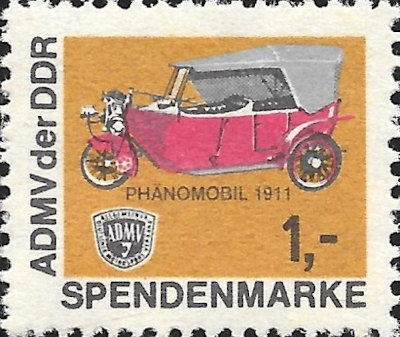
In 1985 finally the series with motorcycle images appeared, 7 in total.
On the first label is a Revierre from 1904. I have never heard of it, and can also not find it on the internet. Interesting is that the motorcycle has a 4-cilinder radial engine in the rear wheel.
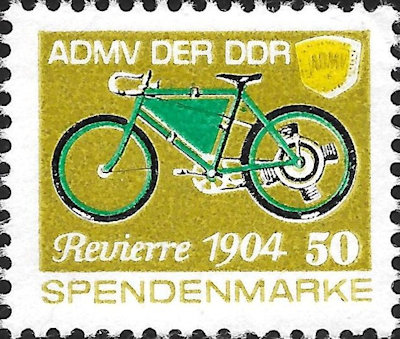
Two varieties exist of this olive green 50 pfennig label: a pale printed variant and one with bright colours.
Of the 1 mark label there are also 2 varieties, but now with different colour and motorcycle. One has a blue background and shows a
Böhmerland motorcycle from 1927, and on the other with green background we see a Wartburg from 1987 with front wheel drive.
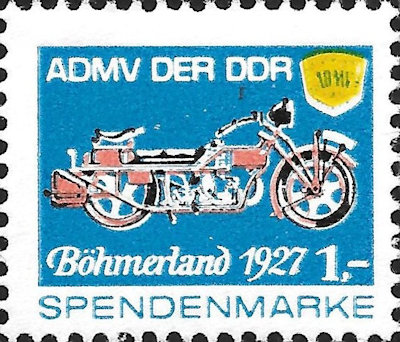
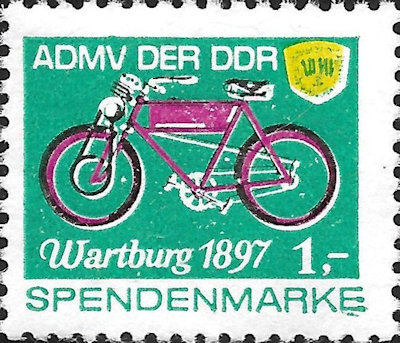
The next value is 2 mark. On this label we see a Windhoff from 1928 against a greenish background.
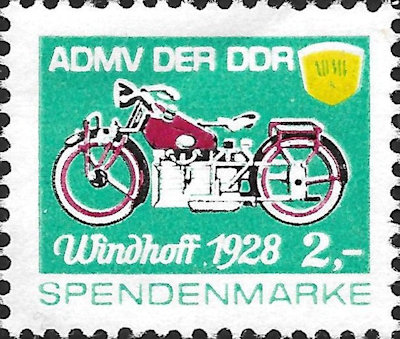
The 3 mark label is blue and shows a Megola from the year 1923. The Megola has a 5-cilinder radial engine in the front wheel, and is one of the most spectacular motorcycles ever made.
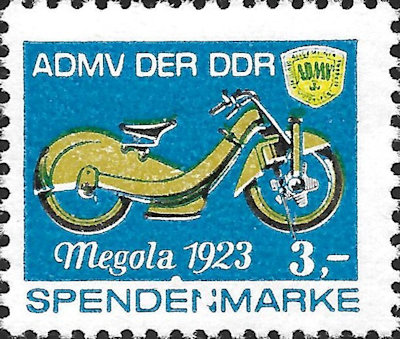
The last value, 5 mark, delivers us again 2 labels. The first with old pink background shows us the Lomos from 1922, made by DKW. This "Sessel-motorrad" (chair motorcycle) was propelled by a 123 cc (later models 142.5 cc) single cilinder engine of 1½ hp, enabling a top speed of 60 km/hour. It was one of the first motorcycles with sprung rear wheel.
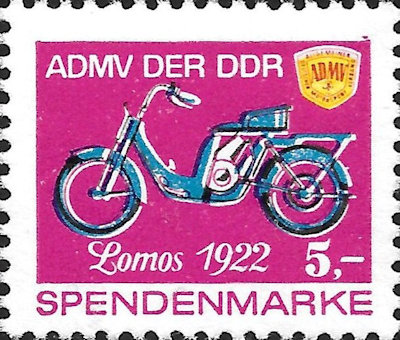
Off course, I would almost say, on the last label in the series the first 2-wheeler driven by an explosion engine: the Daimler Einspur. It was this motorcycle, here depicted against a red background, that rode as first in 1885 and is generally seen as the first motorcycle.
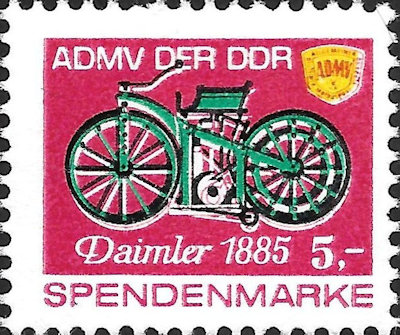
In reality this is already the second model as the very first Einspur (Single-Track-Car) or the Daimler Petroleum Reitwagen as the Germans usually call it had indirect steering.
After the Wende the ADMV stayed active in the new German Länder (the old GDR region) as sports organization. Next to the ADAC they still organize car and motorcycle sports events, but the boat activities have been terminated. Here a recent red franking in blue.

Hans de Kloet
Top - Back to former page - Home |